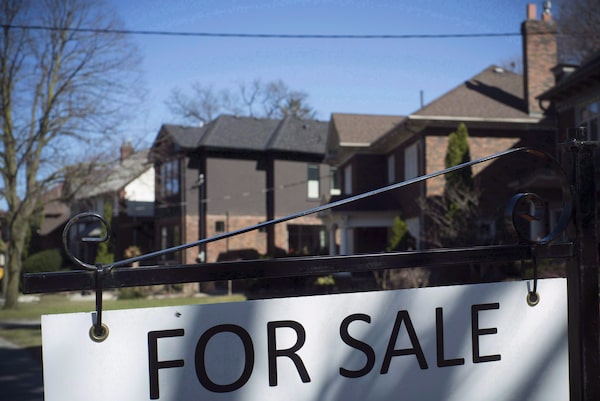
CREA says home prices in Canada rose on a monthly basis in March after 12 consecutive months of declines.Graeme Roy/The Canadian Press
The Canadian housing market started to show signs of a rebound in March, with demand increasing and monthly home prices rising for the first time since the Bank of Canada embarked on its plan to slash inflation by raising interest rates.
After declining for 12 consecutive months, the national home price index rose 0.2 per cent to $709,000 from February to March, according to the Canadian Real Estate Association (CREA.) Home sales rose slightly for the second straight month, with more prospective home buyers entering the market after the central bank took a break from increasing rates.
“The green shoots continued to pile up in March,” Shaun Cathcart, the association’s senior economist, said in a news release.
However, many homeowners continued to shy away from putting their homes up for sale. The number of new listings fell 5.8 per cent in March to hit a 20-year low.
As of the end of March, there were 3.9 months of inventory remaining, CREA said. That is a measure of the amount of time it would take to sell all the listed properties if the pace of sales remained the same. The long-term average has been just over five months.
The dearth of new listings suggests that most homeowners with a mortgage have been able to handle the spike in borrowing costs without being forced to sell their properties. And other homeowners who were considering selling have been reluctant to list because they believe their properties would not fetch top dollar.
“Potential sellers don’t want to sell into a down market,” Bank of Montreal senior economist Robert Kavcic said in a research note.
CREA said activity could continue ramp up this spring, as would-be buyers get more assurances that borrowing costs will remain steady. The association also believes that buyers had been waiting for home prices to stop falling.
The home price index, which excludes sales of highly priced properties and is industry’s preferred measure, has started to increase in the city of Toronto and its suburbs. Last month, the home price index rose 1.6 per cent in Toronto and 2.1 per cent in the affluent region of Oakville-Milton to the west.
Home prices have also started to climb in markets that overheated when borrowing costs were near zero. That includes London, Kitchener-Waterloo and Kawartha Lakes in Ontario, and the Chilliwack region in the Interior of British Columbia.
CREA chair Jill Oudil said that the intense market conditions of recent years have not gone away. “They’ve just been on pause,” she said in a news release.
Realtors in markets such as London, Chilliwack and Halifax said buyer pools there had shifted to local residents after home prices had dropped by double digits. Before that, during the frenetic COVID-19 real estate boom, the majority of buyers had been residents from bigger cities such as Toronto and Vancouver.
Although mortgage rates are now the most expensive in years, prospective buyers have been adjusting to them by relying more on family help and looking for relatively cheaper properties such as condos.
Compared with last March, the home price index is down 15.5 per cent. That was a smaller decline than February’s year-over-year drop of 16 per cent.